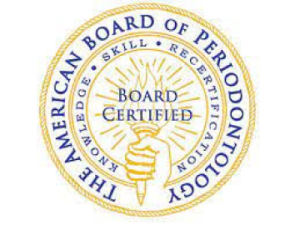When it comes to our oral health, we often think about our teeth and gums. However, there are many other aspects of the oral and facial anatomy that need attention. During a comprehensive dental examination, not only are the teeth and gums examined, but also other areas such as the lips, cheeks, hard and soft palate, tongue, skin, muscles, glands, and even the temporomandibular joint. This thorough examination plays a vital role in detecting various oral and systemic diseases, including abnormalities of the oral mucosa.
Sometimes, during the examination, an abnormality such as an oral lesion is discovered. This abnormality may appear as a white or red spot, a lump, or any other unusual localized change in the tissues. While most abnormalities are benign, it is essential to be cautious and perform an oral biopsy, with the help of a dentist, to obtain a definitive diagnosis. An oral biopsy involves the removal of a piece of abnormal tissue from the oral cavity, which is then examined by a pathologist under a microscope.
Understanding what an oral biopsy reveals is important for patients who may be facing the possibility of oral cancer or other oral diseases. In this blog, we will explore the purpose of an oral biopsy, the different types of oral biopsies, how to prepare for the procedure, what to expect during and after the biopsy, and how to interpret the biopsy results. We will also address common questions and concerns surrounding oral biopsies. So let’s dive in and gain a deeper understanding of this crucial diagnostic procedure.
The Purpose of an Oral Biopsy
The purpose of an oral biopsy is to obtain a definitive diagnosis of an oral lesion or abnormal tissue. While many oral lesions are harmless, some may be precancerous or even indicative of oral cancer. An oral biopsy allows a pathologist to examine the cells or tissue under a microscope and determine the nature of the abnormality. This definitive diagnosis is crucial for planning appropriate treatment and determining the prognosis. By understanding the purpose of an oral biopsy, individuals can make informed decisions about their oral health and take appropriate action if necessary.
Understanding the Need for a Biopsy
The need for an oral biopsy arises when an abnormality is found during an oral examination. While most oral lesions are benign, it is important to investigate further to rule out the possibility of cancer or other serious conditions. An oral biopsy is a definitive diagnostic tool that provides valuable information about the nature of the abnormal tissue. It helps determine whether the abnormality is benign, precancerous, or indicative of oral cancer. By undergoing an oral biopsy, individuals can receive a definitive diagnosis and appropriate treatment, if necessary. Regular oral cancer screenings and the use of biopsy procedures, when needed, play a crucial role in early detection and improving the chances of successful treatment.
Differentiating Between Types of Oral Biopsies
When it comes to oral biopsies, there are different types that may be performed depending on the size and location of the abnormal tissue. The two main types of oral biopsies are incisional biopsies and excisional biopsies.
Incisional biopsies involve the removal of a small piece of abnormal tissue for examination. This type of biopsy is typically performed when the abnormality is large or difficult to remove entirely. It allows for a thorough examination of the tissue to obtain a definitive diagnosis.
On the other hand, excisional biopsies involve the complete removal of the abnormal tissue. This type of biopsy is often performed when the abnormality is small and easily excisable. Excisional biopsies aim to remove the entire abnormal tissue, providing a comprehensive evaluation of the sample.
The choice between an incisional or excisional biopsy depends on the specific characteristics of the abnormal tissue and the expertise of the oral surgeon performing the procedure. Oral surgeons, who are highly trained in performing oral biopsies, can determine the most appropriate type of biopsy for each individual case.
Preparing for Your Oral Biopsy
Preparing for an oral biopsy involves both physical and mental preparation. Before the procedure, it is important to discuss your dental history with your oral surgeon and provide any necessary medical information. This will help ensure that the biopsy procedure is performed safely and effectively by general dentists. Additionally, local anesthesia will be administered to numb the surgical area and minimize discomfort during the procedure. By preparing both mentally and physically, patients can approach the oral biopsy with confidence and reduce anxiety.
What to Expect Before the Procedure
Before the oral biopsy procedure, it is important to understand what to expect. This includes discussing your dental history and any relevant medical information with your oral surgeon. The surgeon will explain the procedure and answer any questions or concerns you may have. You will also receive local anesthesia to numb the surgical site and ensure a comfortable experience during the biopsy. It is essential to follow any pre-procedure instructions given by your oral surgeon, such as avoiding eating or drinking for a certain period of time before the biopsy. By knowing what to expect before the procedure, you can feel prepared and confident in your decision to undergo an oral biopsy.
How to Prepare Mentally and Physically
Preparing mentally and physically for an oral biopsy can help alleviate anxiety and ensure a smoother experience. Mentally, it can be helpful to educate yourself about the procedure and ask any questions you may have during your consultation with the oral surgeon. Understanding the purpose of the biopsy and the potential outcomes can provide reassurance and a sense of control. Physically, following any pre-procedure instructions provided by your oral surgeon, such as fasting before the biopsy, will help ensure a successful procedure. Additionally, practicing relaxation techniques or engaging in activities that help reduce stress can contribute to a positive mindset and overall well-being. By preparing both mentally and physically, you can approach the oral biopsy with confidence and minimize any potential anxiety.
The Oral Biopsy Procedure Explained
The oral biopsy procedure is a surgical procedure that involves the removal of a piece of abnormal tissue from the oral cavity for further examination. It is typically performed by oral surgeons who are skilled in conducting oral biopsies. The procedure is usually done under local anesthesia to minimize discomfort. During the biopsy, a sample of cells or tissue is taken from the surgical site using specialized tools such as a scalpel, forceps, or a laser. The sample is then sent to a pathologist who examines it under a microscope to provide a definitive diagnosis. The oral biopsy procedure is a crucial step in diagnosing and treating oral lesions and conditions, specifically those related to soft tissue in the oral cavity.
Step-by-Step Guide to the Procedure
The oral biopsy procedure involves several steps to ensure the safe and accurate removal of abnormal tissue. Here is a step-by-step guide to the procedure:
- Local anesthesia: The surgical area is numbed using local anesthesia to minimize discomfort during the procedure.
- Incision or excision: Depending on the type of biopsy, an incision is made to remove a small piece of abnormal tissue (incisional biopsy) or the entire abnormal tissue (excisional biopsy).
- Sample collection: The oral surgeon uses specialized tools such as a scalpel or forceps to collect the sample of cells or tissue from the surgical site.
- Tissue stabilization: If necessary, the surgeon may use sutures to stabilize the tissue and promote proper healing.
It is important to note that the specific steps of the procedure may vary depending on the individual case and the expertise of the oral surgeon. Following the biopsy, the sample is sent to a pathologist for examination under a microscope to obtain a definitive diagnosis.
Tools and Techniques Used During a Biopsy
During an oral biopsy, oral surgeons use various tools and techniques to ensure the safe and effective removal of abnormal tissue. These tools may include:
- Scalpel: A surgical knife used to make precise incisions in the oral cavity.
- Forceps: Specialized instruments used to grasp and remove the abnormal tissue.
- Suture: Threads used to close any incisions made during the biopsy.
- Laser: In some cases, a laser may be used to remove the abnormal tissue without the need for incisions.
The choice of tools and techniques depends on the specific characteristics of the abnormal tissue and the expertise of the clinician. The goal is to remove the tissue sample while minimizing discomfort and promoting proper healing. Clinicians, who are highly trained in using these tools and techniques, work to ensure the best possible outcome for the patient.
After the Biopsy: Recovery and Care
After an oral biopsy, proper aftercare and recovery are crucial for optimal healing and minimizing any discomfort. It is important to follow the provided aftercare instructions, which may include:
- Stitches and gauze: If stitches were used to close the incision, it is essential to follow any instructions regarding their care and removal. Gauze may also be used to control bleeding and promote healing.
- Discomfort and bleeding: Some discomfort and minor bleeding are normal after an oral biopsy. However, if excessive bleeding or severe discomfort occurs, it is important to contact your oral surgeon.
- Oral hygiene: Maintaining good oral hygiene is important during the recovery period. It is crucial to follow any instructions regarding brushing, flossing, and using mouthwash.
By following the recommended aftercare instructions and seeking prompt medical attention if needed, patients can ensure a smooth recovery process after an oral biopsy.
Immediate Aftercare Instructions
After an oral biopsy, it is important to follow the immediate aftercare instructions provided by your oral surgeon. These instructions may include:
- Stitches and gauze: If stitches were used to close the incision, it is essential to follow any instructions regarding their care and removal. Change the gauze as directed to control bleeding and promote healing.
- Avoid certain foods and drinks: Your oral surgeon may recommend avoiding certain foods and drinks, such as hot or spicy foods, to prevent irritation to the surgical site.
- Pain management: Over-the-counter pain relievers may be recommended to manage any discomfort. Follow the recommended dosage and consult your oral surgeon if the pain persists.
- Oral hygiene: It is important to maintain good oral hygiene but avoid brushing directly over the surgical site. Rinse your mouth with an antiseptic mouthwash as directed by your oral surgeon.
By following these immediate aftercare instructions, you can promote proper healing and minimize any post-operative discomfort.
Long-Term Care and Observation
After an oral biopsy, long-term care and observation are crucial to monitor the healing process and ensure any potential complications are addressed. This may involve:
- Follow-up appointments: Your oral surgeon will schedule follow-up appointments to monitor the healing process and discuss the results of the biopsy. These appointments allow for any necessary adjustments to the treatment plan.
- Observation of oral mucosal lesions: Regular self-examination of the oral cavity can help detect any new or recurring oral mucosal lesions. If any changes are noticed, it is important to promptly contact your oral surgeon for further evaluation.
- Participation in clinical trials: In some cases, individuals may be eligible to participate in clinical trials that explore new treatments or diagnostic techniques for oral mucosal lesions. Your oral surgeon can provide information about any available clinical trials.
By staying proactive and engaged in your oral health, you can ensure ongoing care and appropriate management of any oral mucosal lesions.
Interpreting Biopsy Results
Interpreting biopsy results is a crucial step in understanding the nature of the abnormal tissue and determining the appropriate treatment. The biopsy sample is sent to a pathologist who examines the cells or tissue under a microscope. The pathologist provides a definitive diagnosis, which may include information about the presence of benign or malignant cells, inflammation, or other specific abnormalities. By interpreting the biopsy results, individuals and healthcare professionals can make informed decisions about further treatment or observation.
Understanding Your Results
Understanding your biopsy results is important for making informed decisions about your oral health. The results are provided by a pathologist who examines the biopsy sample under a microscope. They provide a definitive diagnosis, which may include information about the presence of benign or malignant cells, the type of abnormality or lesion, or the presence of inflammation. It is important to discuss the results with your oral surgeon or healthcare provider who can explain the findings in detail and answer any questions you may have. Understanding your biopsy results allows you to proceed with appropriate treatment or observation and take the necessary steps to maintain your oral health.
Possible Outcomes and What They Mean
Biopsy results can vary and may indicate different outcomes, each with its own implications. Here are some possible outcomes and what they mean:
| Outcome | Meaning |
| Benign | The abnormal tissue is non-cancerous and does not pose a significant health risk. |
| Malignancy | The abnormal tissue is cancerous and requires further treatment or management. |
| Inflammation | The abnormal tissue shows signs of inflammation, which may require monitoring or treatment. |
It is important to note that these are general outcomes, and the specific implications may vary depending on the individual case. Your oral surgeon or healthcare provider will provide detailed information about your biopsy results and guide you in making informed decisions regarding further treatment or observation.
Navigating Emotional Responses
Receiving the results of an oral biopsy can trigger various emotional responses, including anxiety, fear, and uncertainty. It is important to navigate these emotions and seek support during this time. Understanding that a definitive diagnosis provides a foundation for appropriate treatment and management can help alleviate anxiety. Coping strategies such as seeking emotional support from loved ones, engaging in stress-reducing activities, and utilizing available resources such as support groups can all contribute to a more positive emotional response during this challenging period.
Dealing with Anxiety and Fear
Anxiety and fear are common emotional responses when awaiting or receiving the results of an oral biopsy. It is important to acknowledge these emotions and find healthy ways to cope with them. Here are some strategies to help deal with anxiety and fear:
- Seek support: Reach out to loved ones for emotional support and understanding.
- Communicate with your healthcare provider: Discuss any concerns or anxieties with your oral surgeon or healthcare provider to gain a better understanding of the situation.
- Practice relaxation techniques: Engage in activities such as deep breathing, meditation, or yoga to help reduce anxiety and promote relaxation.
- Educate yourself: Learn more about the biopsy results and your condition to empower yourself and alleviate your fear of the unknown.
- Consider professional support: If anxiety or fear becomes overwhelming, consider seeking support from a mental health professional who can provide guidance and coping strategies.
By implementing these strategies, individuals can navigate anxiety and fear in a healthy and constructive manner.
Finding Support and Resources
Finding support and resources during the biopsy process can provide valuable guidance and comfort. Here are some avenues for finding support:
- Support groups: Joining support groups specific to oral health, oral cancer, or biopsy experiences can provide a sense of community and understanding.
- Referral to specialists: Your healthcare provider can provide referrals to specialists who can offer additional information and support.
- Online resources: Utilize reputable online resources that offer information and guidance about oral biopsies and related topics.
- Counseling services: Consider reaching out to mental health professionals who specialize in supporting individuals facing medical challenges.
- Dental and medical professionals: Communicate openly with your oral surgeon, primary care physician, and other healthcare providers to ensure you receive the support and resources you need.
By seeking support from these various sources, individuals can find comfort, guidance, and valuable information throughout the oral biopsy process.
Contact Palm Beach Periodontics Today
In conclusion, understanding what an oral biopsy reveals is crucial for proactive oral health management. By differentiating between types of oral biopsies and preparing adequately for the procedure, you pave the way for accurate diagnosis and appropriate treatment. Post-biopsy care and interpreting results play pivotal roles in your recovery journey. Remember, emotional support and seeking guidance during this process are equally important. Stay informed, stay vigilant, and prioritize your oral health for a brighter, healthier future. Contact us for help today.
Frequently Asked Questions
How accurate are oral biopsies?
Oral biopsies are highly accurate in providing a definitive diagnosis. The biopsy sample is examined by a pathologist under a microscope, allowing for precise identification of abnormalities or lesions, including the presence of benign or malignant cells.
Can a biopsy detect all types of oral diseases?
While a biopsy is a valuable diagnostic tool, it may not detect all types of oral diseases. However, it is an essential procedure for detecting oral cancers and obtaining a definitive diagnosis for a wide range of oral lesions and abnormalities.
What are the next steps if my biopsy results are positive?
If your biopsy results indicate a positive finding, such as malignancy, the next steps will depend on the specific diagnosis. Your oral surgeon or healthcare provider will guide you in developing a treatment plan, which may involve referrals to specialists and discussing various treatment options.












